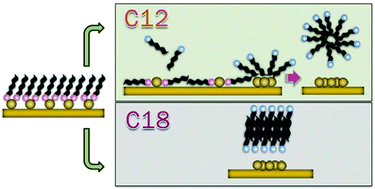New insight into the electrochemical desorption of alkanethiol SAMs on gold
Abstract
A combination of Polarization Modulation

* Corresponding authors
a Instituto de Investigaciones Fisicoquímicas Teóricas y Aplicadas (INIFTA - CONICET), 1900 La Plata, Buenos Aires, Argentina
b Department of Biomedical Engineering, Northwestern University, Evanston, Illinois 60208, USA
c Chemistry of Life Processes Institute, Northwestern University, Evanston, Illinois 60208, USA
d Department of Materials Science and Engineering, Northwestern University, Evanston, Illinois 60208, USA
e
INQUIMAE, CONICET, DQIAQF, FCEN, UBA, Ciudad Universitaria, Pabellón II, Buenos Aires, Argentina
E-mail:
lmendezdeleo@qi.fcen.uba.ar
A combination of Polarization Modulation

 Please wait while we load your content...
Something went wrong. Try again?
Please wait while we load your content...
Something went wrong. Try again?
E. Pensa, C. Vericat, D. Grumelli, R. C. Salvarezza, S. H. Park, G. S. Longo, I. Szleifer and L. P. Méndez De Leo, Phys. Chem. Chem. Phys., 2012, 14, 12355 DOI: 10.1039/C2CP41291H
To request permission to reproduce material from this article, please go to the Copyright Clearance Center request page.
If you are an author contributing to an RSC publication, you do not need to request permission provided correct acknowledgement is given.
If you are the author of this article, you do not need to request permission to reproduce figures and diagrams provided correct acknowledgement is given. If you want to reproduce the whole article in a third-party publication (excluding your thesis/dissertation for which permission is not required) please go to the Copyright Clearance Center request page.
Read more about how to correctly acknowledge RSC content.
 Fetching data from CrossRef.
Fetching data from CrossRef.
This may take some time to load.
Loading related content
